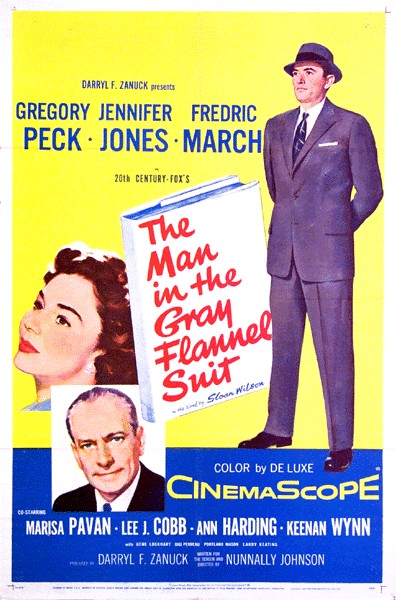
Like so many young men of the day, Tom finds himself caught up in the corporate rat race-what he encounters there propels him on a voyage of self-discovery that will turn his world inside out.

They have every reason to be happy, but for some reason they are not. Here is the story of Tom and Betsy Rath, a young couple with everything going for them: three healthy children, a nice home, a steady income.

It was a national bestseller that was made into an award-winning film, it was translated into twenty-six languages, and its title has become a permanent part of our cultural vocabulary. Wendy Kozol, Life’s America: Family And Nation In Postwar Photojournalism (Philadelphia: Temple University Press, 1994).Universally acclaimed when first published in 1955, The Man in the Gray Flannel Suit captured the mood of a generation. Philips, Blue-Collar Marriage (1962) (New York: Vintage, 1967). in Daniel Horowitz, Vance Packard and American Social Criticism (Chapel Hill and London: University of North Carolina Press, 1994), 167. Roland Marchand, Advertising the American Dream: Making Way for Modernity, 1920–1940 (Berkeley: University of California Press, 1985). Robinson, The Man in the Bowler Hat (Chapel Hill and London: University of North Carolina Press, 1993), 26. Davis, Enforcing Normalcy: Disability, Deafness, and the Body (London and New York: Verso, 1995), 6–27. This term inconspicuous consumption is used in William Whyte’s Organization Man (New York: Doubleday, 1956)Īnne Hollander, Sex and Suits: The Evolution of Modern Dress (New York: Kodansha, 1994), 17.

Sloan Wilson, The Man in the Gray Tlannel Suit (1955 rpt. This process is experimental and the keywords may be updated as the learning algorithm improves. These keywords were added by machine and not by the authors. … A touching, powerful novel about men and women you know, live with, and love!“ 2 Keywords But the tag line above the image on the 1956 paperback edition suggests that readers of the 1950s already knew him: “The superb best seller America is taking to its heart. Who is this “Man in the Gray Flannel Suit?,” the mystery of the title and illustration beg us to discover. 1 But beyond a vaguely stern, upward glance, the man’s face remains indecipherable beneath its fedora.

Shoulders squared, feet apart, hands clasped behind him, this dark-gray silhouette is clever in its combination of legibility and illegibility In the original image, which I am unable to reproduce here, one can clearly make out the suit, the straight edge of a white handkerchief, the white collar. The cover image for Sloan Wilson’s best-selling 1955 novel The Man in the Gray Flannel Suit features a slim, suited man, striking what looks like a military “at ease” stance.


 0 kommentar(er)
0 kommentar(er)
